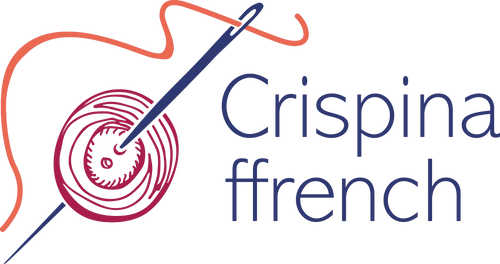Crispina.eco
Make Your Own Potholder Rugs ~ PDF Tutorial
Make Your Own Potholder Rugs ~ PDF Tutorial
Couldn't load pickup availability
Step by Step Instruction by the originator, Crispina ffrench
Learn how to make a Potholder Rug! DIY tutorial show the exact steps for upcycling old clothing and material to create a beautiful, durable Potholder Rugs. Lots of colorful illustrations.
Please note: This tutorial does not include directions on how to make a loom. Looms are available for purchase in the shop.
Potholder Rugs use a lot of material with very little waste. The average 2.5x3.5ft rug made on our standard-sized Potholder Rug loom, weighs 7lbs. Figure there is a 30% waste factor so you will need about 10 lbs of raw material garments to make your first rug. Keep in mind that different kinds of fiber weigh substantially differing amounts — an XXL Fleece weighs a lot less than an XXL Cotton Sweatshirt.
Use Crispina's technique as much as you desire. Kindly credit her when using this technique that I have devised and developed since 1990. See below for the story of how Potholder Rugs came to be!
~ ~ ~ ~ ~ ~ ~ ~ ~ ~ ~ ~ ~
Thanks for looking! Check out my upcoming events and workshops, read my blog, and see my latest work at www.crispina.eco
~ ~ ~ ~ ~ ~ ~ ~ ~ ~ ~ ~ ~
CRISPINA — INVENTOR OF POTHOLDER RUGS
While a college student at Massachusetts College of Art in Boston, Crispina began using wool sweaters from the thrift shop to make Ragamuffin dolls, developed as schoolwork and sold at The Cambridge Artist Cooperative.
The raw material was completely awesome - the colors, textures, sourcing, and price; a magical mine of possibility had been discovered. Soon, mittens, then blankets and reconstructed sweaters were being compiled by a bevvy of amazing hand sewers. 2 years after graduation Crispina Designs employed 40 and was supplying 350 retail outlets around the world.
Crispina's penchant for reusing material was married to the calling to creatively inspire an alternative to excessive consumption. Her work was in high demand and finding enough material was becoming difficult.
Paul Petrescu, and old and dear friend of Crispina's father, had recently defected from Romania, and was living with her parents in Stockbridge, MA. He was an Eastern European Folk Art Scholar and was intrigued by Crispina's upcyling work. When he learned of her material aquisition conundrum, Paul told her of a wholesale used clothing place called The Garment District in Cambridge, MA (with his perfect, albeit accented, English).
Crispina never learned how he, having been in the country for only a matter of months at the time, knew this key to launching Crispina's creative and environmentally conscious process. He was one of Crispina's angels who was in the right place at the right time.
So off she went with a beat up old van to check The Garment District out. Arriving back to her studio with the van stuffed full of garbage bags brimming with the most amazing wool sweaters and a head whirring with ideas and inspiration. Within a few weeks her treasure trove of material had turned into a pile of sweaters, mittens, and Ragamuffins, which were turning into a pocketful of money.
This was the beginning of a long connection with new-found fellow recyclers at The Garment District. 1000 lb. bales of sweaters were purchased in volume. Bruce Cohen, proprietor of the place let Crispina and her sidekick, Charlie sort through eight or ten 1000lb bales of ‘wool knits’ to gather the most suitable material for production needs enabling her to purchase pre-sorted materials.
Crispina reminisces,
"As I was rummaging through the mountains of material in the 100-year-old family business housed in an awesomely dingy warehouse, I thought a lot about all the material there. What was the process? Where did it all come from? Who else used this sort of raw material, and, for what purpose? An education ensued, far beyond the formal BFA I had recently fixed under my belt."
Soon she jumped in to purchasing bales of unsorted wool knits as an experiment to see what could be designed with all the materials. Lo and behold, Potholder Rugs came to be. They can be made from sweaters with holes and stains, ones that were not really wool at all, bottom-of-the-barrel materials work just fine. T-shirts, Sweatshirts, leggings tights, even single socks work.
Let's save the world with Potholder Rugs! You ready!?




















